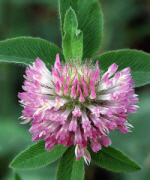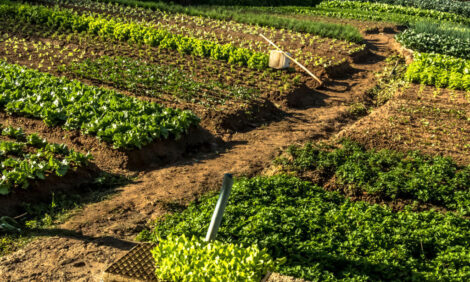



Hunger Efficiency: The Science of Alternative Forage
Utilising the natural, free benefits that the land can provide is one of the key aims of livestock producers, but understanding all the benefits that good management brings is often unappreciated. Adam Anson, reporting for TheCattleSite, looks at alternative forage experiments and gets to grips with the results.Due to the rising costs of feed and fertilisers, farmers are looking closely at feeding options for the autumn/winter period. Careful consideration and management of pastures can reap great rewards for producers, but creating a fruitful sustainable system of management is a complex matter. Research has shown how a combination of methods can produce improved results - and in doing so have gained a deeper understanding of a wider spectrum of issues. However, of primary concern is how to utilise land for profit.

Dave Davies, speaking at the 2009 Quality Meat Scotland conference held in Perth, outlined the importance of consistent growth patterns for profit. He showed how this can be achieved through better management of grass, alternative forages and the silage available.
In his presentation, Dr Davies used research conducted at Institute of Biological Environmental and Rural Sciences (IBERS) at Aberyswyth University to show how a 'focus on forage' can rise up to meet these new economic challenges by negating the reliance on concentrates and supplements. With a greater understanding of how forage based systems work, he was able to measure their effects on animal performance and efficiency. Variations in carcase and meat quality were of key concern to his project, which identified the utilisation of land and soil, right through to the final packaged product.
Dr Davies explained how a good animal feed is one that produces consistent growth results by supplying consistent levels of nutrients. The dangers of variation show their face in slow, inefficient growth patterns and light fatty carcases. During the winter months maintaining a good pasture is of mounting concern, which is why planning for top quality silage is so important.
What Makes a Good Meal for Cattle?
Good quality silage relies on the true protein content. "True protein converted much more efficiently into meat and milk", said Dr Davies, commenting on field studies. Typically, about 90 per cent of herbage Nitrogen in grasses and legumes is in the form of protein. However, up to 70 per cent of this is degraded during ensilage. The Institute of Grassland and Environmental Research (IGER) Microbiology and Conservation Group research teams have studied and made considerable advances in ensiling technology and in particular the biological control of grass silage fermentations. Inoculants containing lactic acid bacteria have been developed which deter the growth of spoilage microorganisms and improve fermentation characteristics in low dry matter grass silage.
The effects of inoculant on grass silages can have a good affect on increasing the true protein content of silage and in doing so increases the live weight gains of the ruminant it is fed too. Research at IBERS showed that the inoculated grass contained 17 per cent more true protein than the one that was not.
Anther factor that is of importance to forage is water soluble carbohydrate levels. New forage has been bred to boost these levels and - in doing so - increase the efficiency with which cattle and sheep utilise the protein available. A consequence of this efficiency is that it reduces loss of Nitrogenous gases to the atmosphere and of nitrate to drainage water.
Dr Davies also identified benefits attributed to sugar levels. According to him, the sugar molecules aid the ruminants ability to mop up protein - again providing for greater efficiency. Taking this knowledge into account, Dr Davies says that his research at IBERS's then set out to find a forage that could provide for all animal needs.
One Forage Against Another
The project set about identifying which type of forage lived up to requirements. Ryegrass, red clover, beans, brassicas, lucerne, peas, birdsfoot trefoil and choicory were all analysed for their forage quality. Lotus initially proved to be a great source of feed for ruminants - a notion that was reflected by rapid growth rates. However, the research - conducted in the UK - concluded that Lotus yield was poor and would therefor make clover an unsuitable choice. Red clover showed the second best results followed by lucerne and ryegrass.
* "One should not underestimate the value of improved forage legume varieties" |
|
Dr Davies
|
The study also indicated differences in how the forage picked up Nitrogen and how the Nitrogen was utilised by the animal that ate it. As a forage, sainfoin showed little utilisation of Nitrogen, but by comparison lucerne and red clover were more efficient. However, Dr Davies also pointed out that high levels of Nitrogen content in forage also leads to high levels of Nitrogen content in the slurry. If levels are too high, this precious Nitrogen could be wasted in run off. On the positive side, by evaluating the Nitrogen content, farmers can use this slurry as a good source of fertiliser. Theoretically, with knowledgeable management practises the successful farmer could save on both feed and fertiliser.
The research concluded that red clover was the best source of forage when considering both soil and livestock. Analysis concluded that it was able to fix 150 kilogrammes of Nitrogen per hectare per year, which was well utilised by gradual delivery to the roots. It also improved the soil structure by opening it up and allowing air in. Consequently, drainage and nutrient uptake were both improved.
Furthermore, clover provided a less fibrous source of feed than grass, which made it highly digestible. It also contained twice as much protein, with a 20 per cent higher intake. Not only did this result in better animal performance, but also an enhanced - superior quality - meat product.
The Benefits
Grass and legumes produce healthier animals. "They improve quality of meat products", said Dr Davies - adding: "Forage fed animals produce steaks with a much longer shelf life and are more consumer attractive." Not only was the product of a superior standard, it was also more valuable and cheaper to produce. The research showed that savings on protein and Nitrogen supplements far outweighed the costs of producing the clover in the first place.
"One should not underestimate the value of improved forage legume varieties, including red clover, which fix atmospheric Nitrogen and are a source of high protein feed" he said. "This improves farmers’ ability to utilise farm-grown forage, reduces the import of feeds and Nitrogen fertiliser onto farms and improves animal performance as well as meat and milk quality."
Red clover varieties that are higher yielding and have enhanced quality for silage making have been developed over the years at Aberystwyth. Carbon footprint is reduced with their use and decreases in the use of energy are also seen.
However, Dr Davies was quick to highlight the quality of grass silage also. "With attention to detail, grass silage can do a very good job," he said. Whilst the down sides of red clover are that it created high levels of estrogen in the cattle and Nitrogen could be wasted in the high content of slurry. In conclusion he recommended that red clover should be produced in conjunction with grass for the best all round feed.


